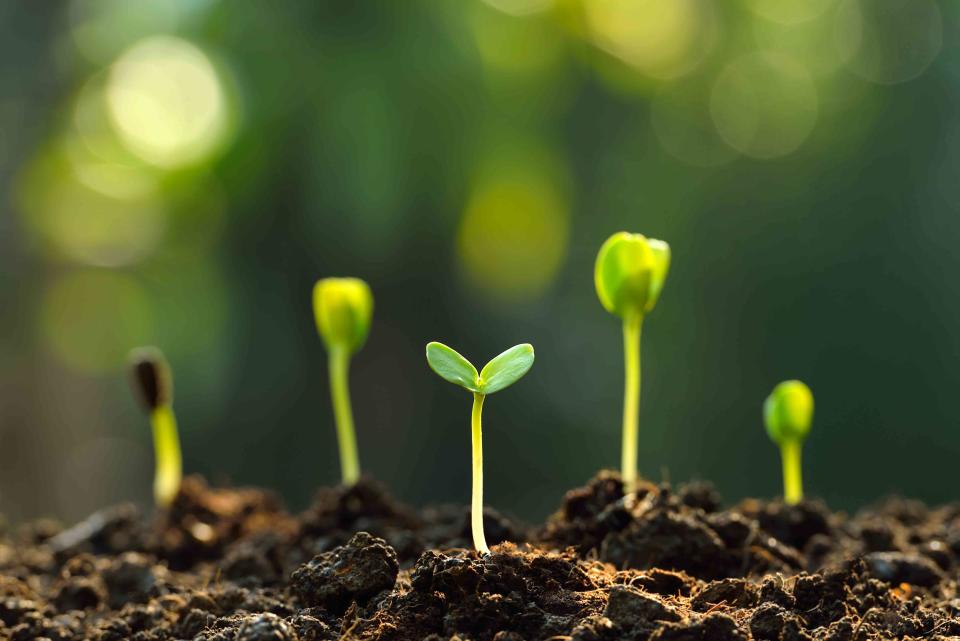How to Know When a Plant Is Established—and How Long It Takes
Plants can take years to become truly established, according to gardening experts.

amenic181 / Getty Images
When you grow plants, whether from seed or transplants, knowing when they are established is key to properly taking care of them. But identifying a well-established plant can be tricky. Annuals, perennials, and shrubs take varying amounts of time to adapt and root well into the ground. The variety, climate, and care needs of each plant also play a role in how fast or slow a plant becomes established. Ahead, gardening experts explain how to know when a plant is established.
Meet the Expert
Sonali Padhye, senior technical manager for PanAmerican Seed and a National Garden Bureau member, a non-profit organization that educates people to increase the use of garden seeds and plants at home.
Stacey Hirvela, National Garden Bureau member and horticulturist for Proven Winners ColorChoice, flowering shrubs that are bred, tested, and selected to bring you more success in the garden.
Darren Barshaw, National Garden Bureau member and product representative for Darwin Perennials, a grower of 600 in-demand unrooted varieties of perennials.
What Does Well-Established Mean?
A plant that is well-established is adapted to its new home and has sufficient roots to hold its own. "Established plants typically refer to plants that are well-rooted in the growing medium," says Sonali Padhye, senior technical manager for PanAmerican Seed and a National Garden Bureau member. "Upon establishment, many species are easier to care for compared to newly transplanted ones, and will require less care."
How to Know When a Plant Is Established
Plants give clues when they're settled and at home in their new soil. Here are some things to look for.
It Has New Growth
A well-established plant will show indications of growth. "The sign that would be most obvious to people would be that the plant has noticeably improved performance compared to the previous seasons—many more flowers, for example, or perhaps a more dense habit, or seeing a substantial increase in the amount of new growth the plant puts on," says Padhye.
It Tolerates Unfavorable Growing Conditions
Plants are typically hardier and can withstand more challenging conditions once they're well-established. "You may also notice that when the weather is hot and dry, the plant doesn’t seem to wilt or show signs of stress like it may have in the past," says Stacey Hirvela, horticulturist for Proven Winners ColorChoice and National Garden Bureau member.
It Needs Less Watering
Typically, plants become lower maintenance when they're established and often allow you to reduce the amount of water you give them, says Barshaw. If you can increase the time between waterings without signs of dehydration, it's possible your plant is established. But keep in mind that just because a plant may not seem to need water doesn’t mean it won’t benefit from it, especially during harsh summer conditions, says Hirvela.
It Requires Pruning
Many plants that have become established will start to require pruning to maintain their size and shape. "As plants become established, you may find that you need or want to prune them to accentuate their best features," says Hirvela. "For example, butterfly bushes, roses, and panicle hydrangeas may not be pruned in their first couple of seasons because they are small, but once established, they will flower better and more consistently over the body of the plant with some regular pruning."
Tips
If you're still not sure if your plant is established, you can do a gentle test. "Check by pulling gently upward on the plant to see if it is well rooted," says Darren Barshaw, product representative for Darwin Perennials and National Garden Bureau member. An established plant won't lift out of the soil easily.
How Long Plants Take to Establish
There isn't one right answer for how long plants take to establish. "The required growth for being considered established will vary across species," says Padhye. "For example, a lettuce plant will establish a lot quicker than a hydrangea, and a hydrangea would be much faster than an oak tree."
Generally shrubs take about two to three years to become well-established. "The first year, the plant is just settling into its new home and adjusting to new conditions," says says Hirvela. "The second year is when that root growth will become prolific, and then the third year, there are sufficient roots for the plant to grow and flower."
Trees can take even longer than shrubs to become established, while perennial flowers make take one or more years to settle into their home, depending on the species you're growing.
How to Get a Plant to Become Established
Understanding a plant's growing requirements—water, soil fertility, soil pH, sunlight—will encourage more rapid growth and help the plant get established more quickly, says Hirvela. Keeping the soil consistently moist but never soggy soil is important to helping a plant establish roots quicker. "Good soil moisture is key during the establishment period, even for drought tolerant plants, because it keeps the roots growing more actively than dry or wet soil," says Hirvela.
Using mulch to reduce evaporation, keep moisture in the soil, and maintain soil temperatures also helps plants get established. "A good 2- to 3-inch layer of an organic mulch, like shredded bark, plays such a key role in plant establishment," says Hirvela. "It makes conditions much more favorable for root growth by conserving moisture and keeping temperatures around the roots cooler in summer and warmer in winter."
Read the original article on Martha Stewart.

